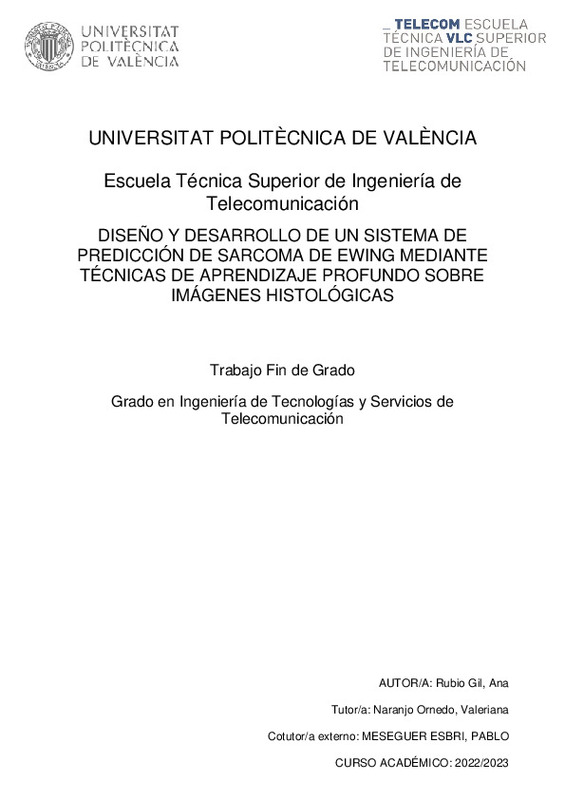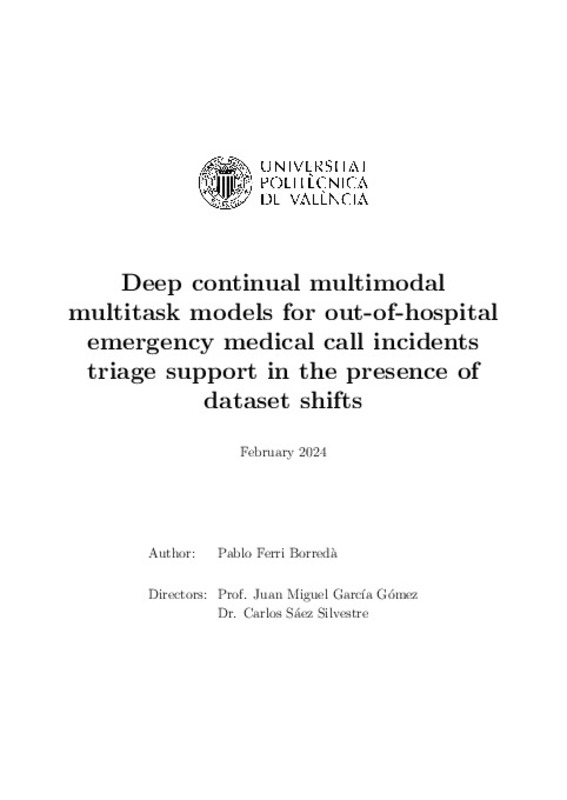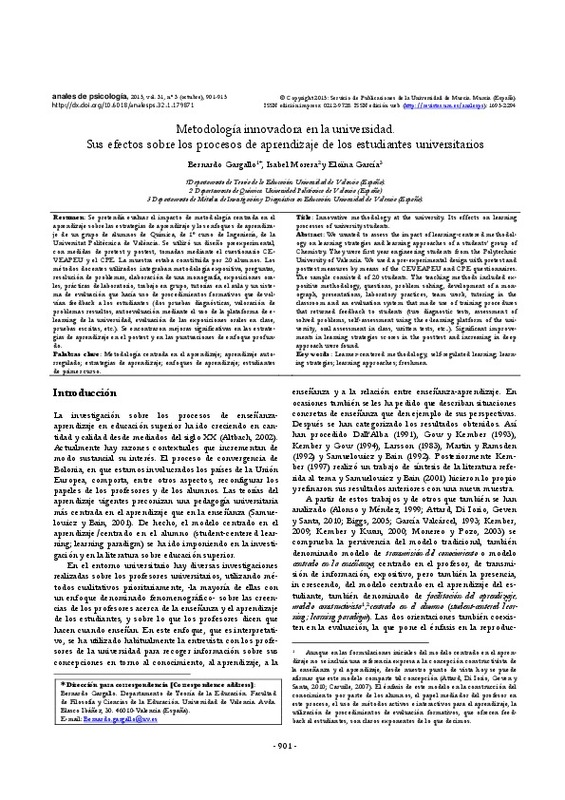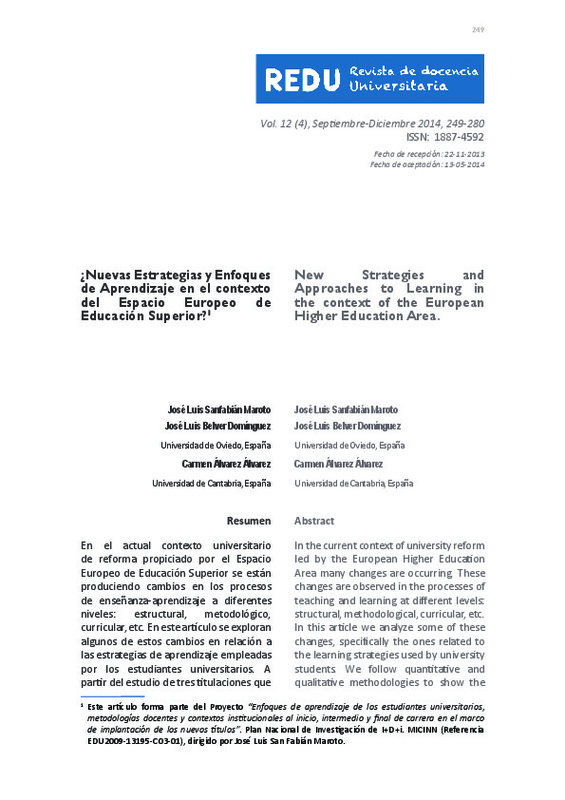- RiuNet repositorio UPV
- :
- Docencia
- :
- Trabajos académicos
- :
- ETSIT - Trabajos académicos
- :
- Ver ítem
JavaScript is disabled for your browser. Some features of this site may not work without it.
Buscar en RiuNet
Listar
Mi cuenta
Estadísticas
Ayuda RiuNet
Admin. UPV
Desde el lunes 3 y hasta el jueves 20 de marzo, RiuNet funcionará en modo de solo lectura a causa de su actualización a una nueva versión.
DISEÑO Y DESARROLLO DE UN SISTEMA DE PREDICCIÓN DE SARCOMA DE EWING MEDIANTE TÉCNICAS DE APRENDIZAJE PROFUNDO SOBRE IMÁGENES HISTOLÓGICAS
Mostrar el registro completo del ítem
Rubio Gil, A. (2023). DISEÑO Y DESARROLLO DE UN SISTEMA DE PREDICCIÓN DE SARCOMA DE EWING MEDIANTE TÉCNICAS DE APRENDIZAJE PROFUNDO SOBRE IMÁGENES HISTOLÓGICAS. Universitat Politècnica de València. http://hdl.handle.net/10251/195565
Por favor, use este identificador para citar o enlazar este ítem: http://hdl.handle.net/10251/195565
Ficheros en el ítem
Metadatos del ítem
| Título: | DISEÑO Y DESARROLLO DE UN SISTEMA DE PREDICCIÓN DE SARCOMA DE EWING MEDIANTE TÉCNICAS DE APRENDIZAJE PROFUNDO SOBRE IMÁGENES HISTOLÓGICAS | |||
| Otro titulo: |
|
|||
| Autor: | Rubio Gil, Ana | |||
| Director(es): | ||||
| Entidad UPV: |
|
|||
| Fecha acto/lectura: |
|
|||
| Resumen: |
[ES] El sarcoma de Ewing es un tipo de cáncer que se desarrolla en los huesos y en el tejido blando que los rodea. Aunque la incidencia es baja a nivel global, en niños y adolescentes es uno de los tumores más frecuentes ...[+]
[EN] Ewing sarcoma is a type of cancer that develops in the bones and the soft tissue surrounding them.
Although the global incidence is low, in children and adolescents, it is one of the most frequent and
aggressive ...[+]
|
|||
| Palabras clave: |
|
|||
| Derechos de uso: | Reserva de todos los derechos | |||
| Editorial: |
|
|||
| Titulación: |
|
|||
| Tipo: |
|
recommendations
Este ítem aparece en la(s) siguiente(s) colección(ones)
-
ETSIT - Trabajos académicos [2432]
Escuela Técnica Superior de Ingenieros de Telecomunicación










